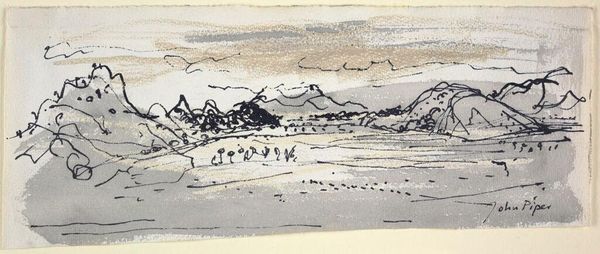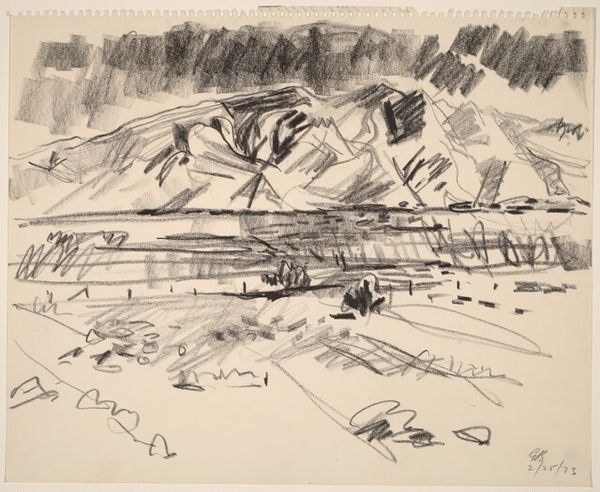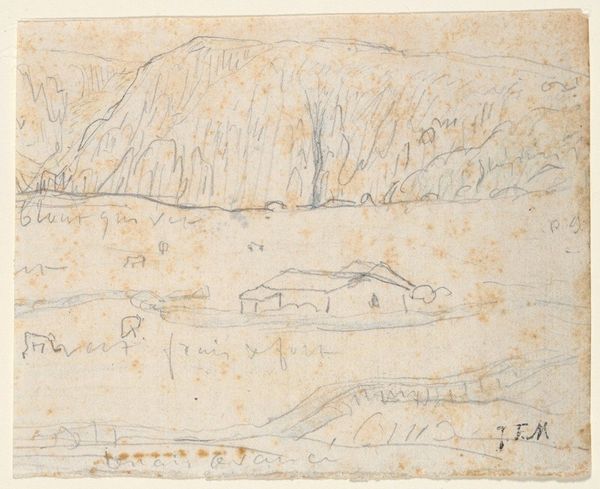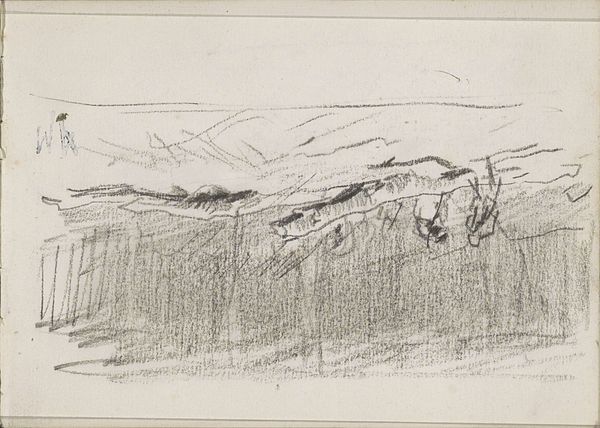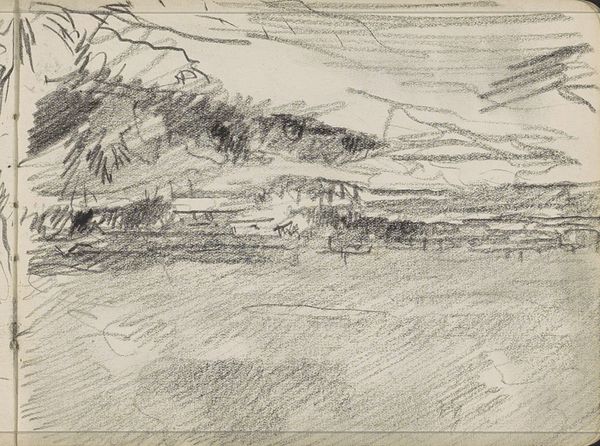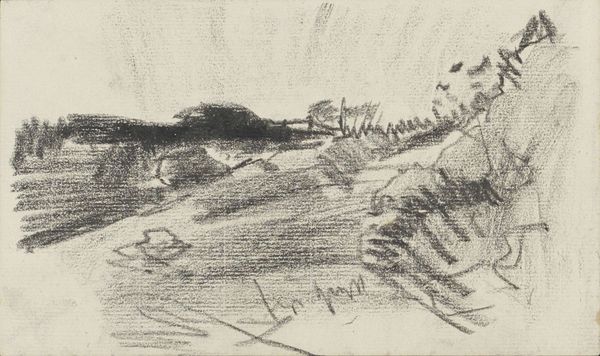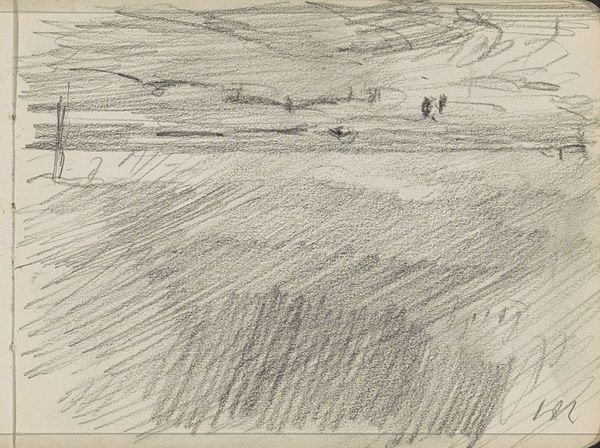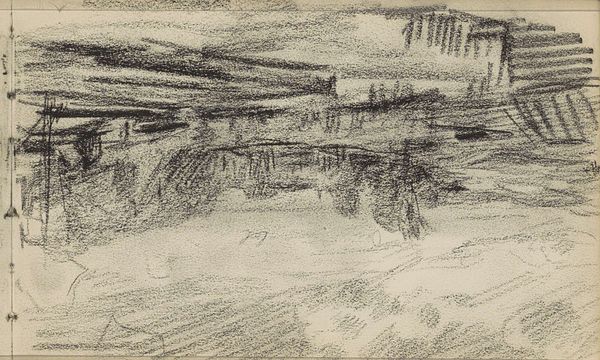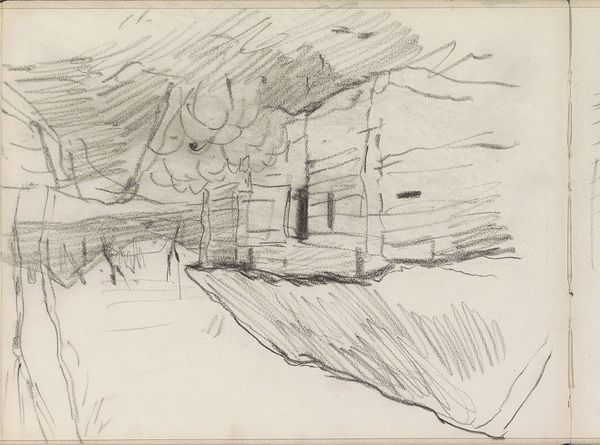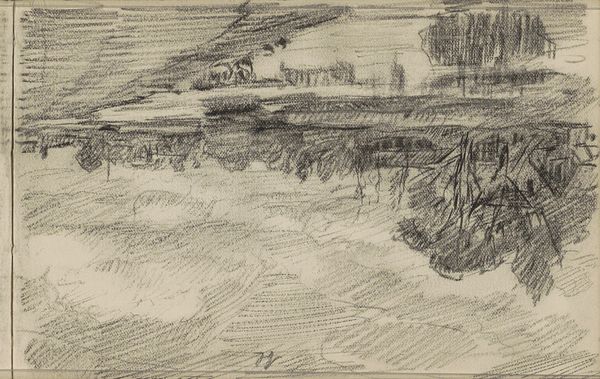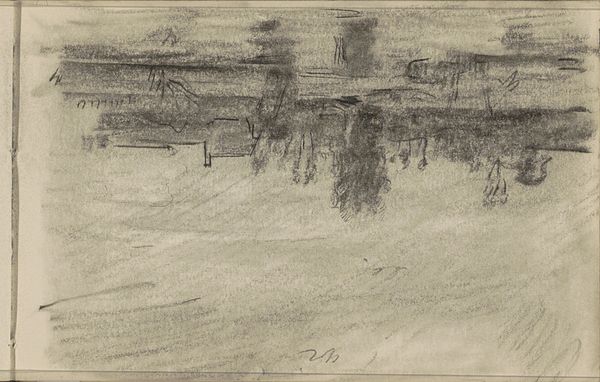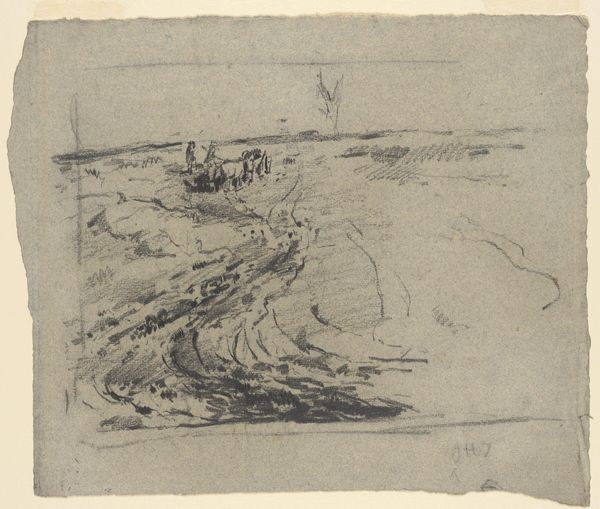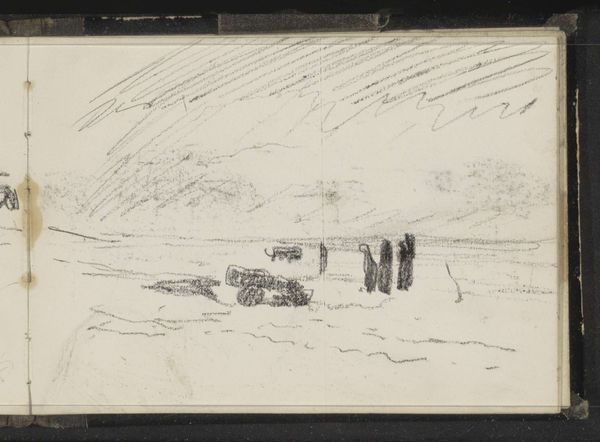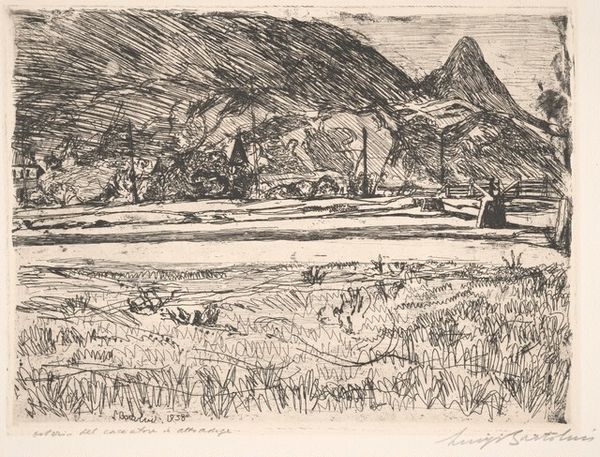
drawing, pencil, graphite, charcoal
#
drawing
#
landscape
#
sketch
#
pencil
#
graphite
#
charcoal
Dimensions: height 230 mm, width 355 mm
Copyright: Rijks Museum: Open Domain
Adolf le Comte sketched this depiction of Vlissingen's harbor using graphite. Here, the most poignant symbol is the fence—a barrier between land and sea. A motif as old as civilization itself, fences have historically demarcated safety from the unknown. Consider the ancient Roman concept of the "pomerium," a sacred boundary separating the city from the outside world, a concept that carried immense ritual significance, defining civic and military spaces. Similarly, this fence evokes a sense of psychological demarcation. It mirrors our internal boundaries—the conscious separating us from the subconscious, the known from the unexplored. The fence’s presence in art throughout the ages is a testament to its enduring symbolic weight, yet in its varied forms—from protective barricades to prison walls—its meaning oscillates between security and confinement. Here, the fence at Vlissingen invites us to ponder the multifaceted nature of boundaries and the psychological thresholds they represent.
Comments
No comments
Be the first to comment and join the conversation on the ultimate creative platform.
